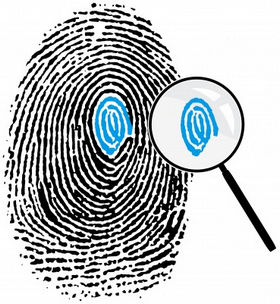Forensic Science Crime Secrets
How Forensic Scientists Solve Crimes
|
Get FREE Info From Schools |
Forensic science crime scene investigations use trace evidence & fingerprints to solve crimes in labs. Learn how serology & DNA are used in forensic science
The task of forensic scientists that investigate crime scenes is varied and complex. Each team member has specific duties with regards to how he or she goes about examining a crime scene.
Forensic Science Crime Scene Investigations
Long ago, a single person was in charge of looking at what happened before, during, and after a crime to determine just what exactly took place and why.
Now there are typically one dozen crime scene investigators and forensic scientists assigned to each case to make sure the results are obtained.
In the ancient world, there was no forensic science. Oftentimes criminals would go free and innocent people would be executed for crimes they didn't commit.
This was because people relied so heavily on confessions and witnesses that were less than trustworthy.
With the amazing modern advances in science and technology, however, forensic science crime scene investigators are now able to look closer and more thoroughly at the anatomy of a crime to determine what happened, where, how, and why.
The Role of the Forensic Scientist
The forensic scientist has many duties, but the four main ones are:
- Discovering the scene of a crime
- Identifying the crime that took place
- Recording what happened, when, and where
- Searching for evidence that may be used to correctly interpret the chain of events
Within these four categories, of course, lie a vast number of specialties, responsibilities and positions.
It is the role of the forensic scientist to carefully plot out what happened at the scene of a crime and analyze the forensic science trace evidence that could lead to a break in the case.
Solving Crimes in the Forensic Science Lab

Fingerprint Analysis is a Forensic Scientists Job |
A wide range of activities take place in the forensic science lab after a crime has been committed.
Among the most important is the role of DNA in forensic science.
Over the past few decades, the analysis of DNA evidence has been linked to the arrest of innumerable culprits, as well as the release of a vast number of men and women who had been falsely incarcerated.
But DNA is only the tip of the iceberg when it comes to forensic science lab work.
Serology in forensic science (the study of blood) is also a widely explored method for expanding one's knowledge about just what went on during a crime.
Yes, this is just like Dexter. In fact, Dexter is a forensic scientist!
Another enormous role of the crime lab is the study of forensic science fingerprints analysis. This is one of the oldest methods of investigating a crime scene, dating back hundreds of years.
Matching prints found at the scene of a crime to those of a suspect is a handy way to solve the age old question of 'whodunit?'
Beyond DNA, blood, and fingerprints, there are a number of other studies going on in the forensic science crime lab, including:
- Firearms analysis
- Toxicology studies
- Geological surveys
- Vehicle reconstructions
- Forensic photography
- And so much more
|
Get FREE Info From Schools |
Return from Forensic Science Crime Scene Investigation to Forensic Science Careers
Return from Forensic Science Crime to Criminology Degree





